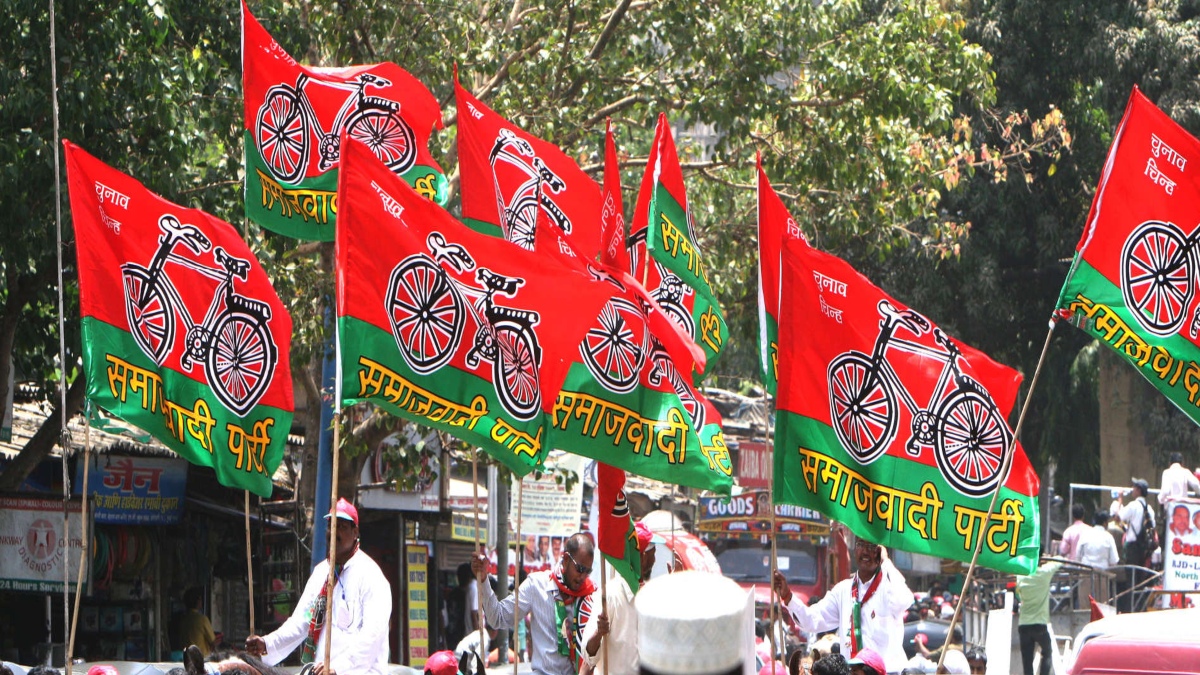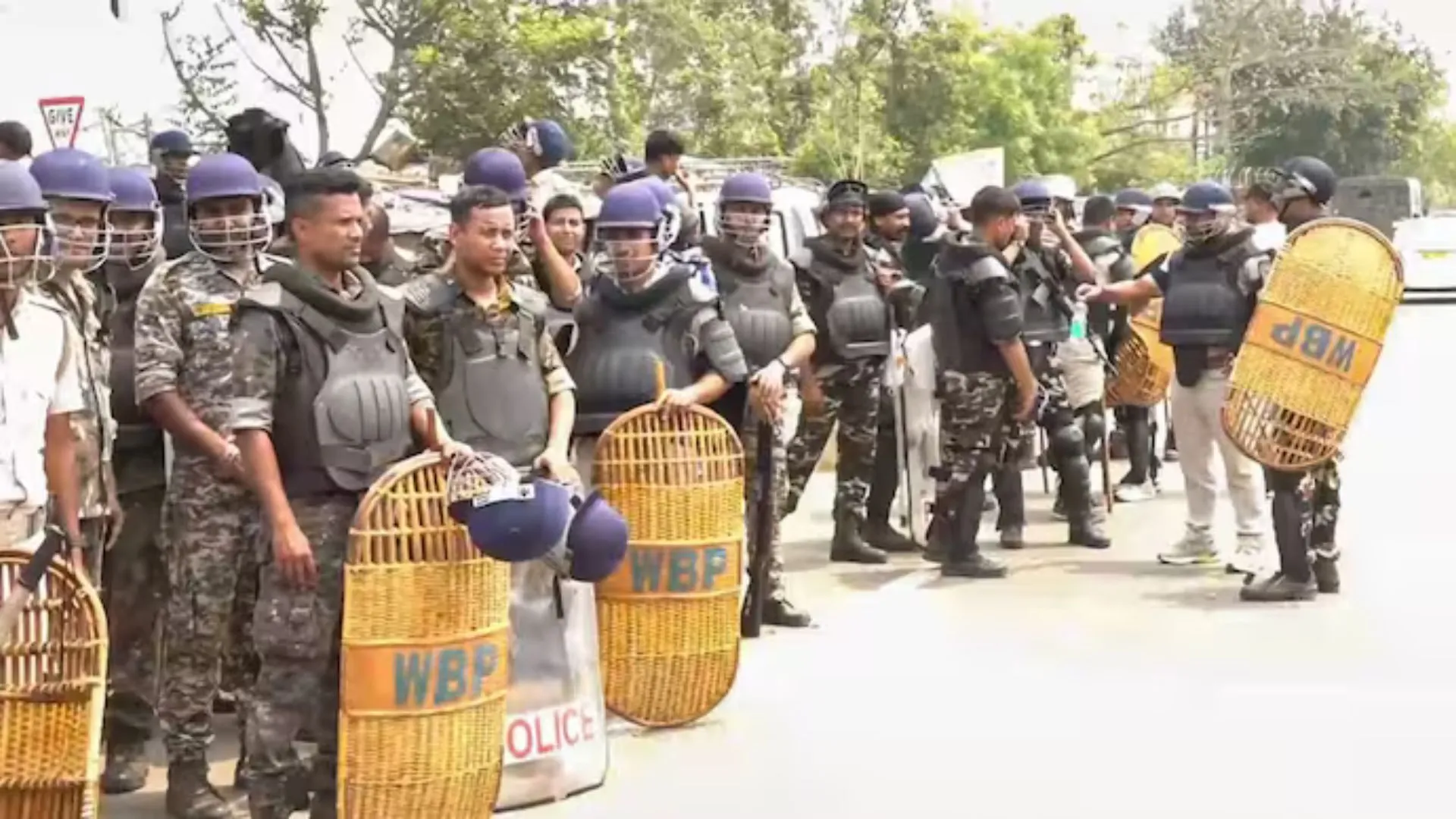With one month left in 2021, parties across the country are stitching final pre-poll alliances for the 2022 Assembly elections. Captain Amarinder Singh’s announcement to ally with the Bharatiya Janata Party (BJP) following the repeal of the farm laws has created an interesting twist in the electoral game in Punjab. While the BJP ended its years-long association with the Shiromani Akali Dal (SAD) in the state, the SAD decided to rekindle a 25-year-old relationship with the Bahujan Samaj Party (BSP). The multi-pronged contest in Punjab also includes the Aam Aadmi Party (AAP) and Indian National Congress (INC) both of whom have not announced any pre-poll alliances. On the other hand, in Uttar Pradesh, where the fight, as of now, appears two-cornered, both the BJP and Samajwadi Party (SP) have continued to form alliances with smaller regional parties across the state aiming to target various Other Backward Class (OBC) and Scheduled Caste (SC) voter groups. Let’s have a look at the major pre-poll alliances in Punjab and UP and see what advantages these alliances are likely to give parties for the 2022 elections.

Source: Wikimedia Commons | Al Jazeera
UTTAR PRADESH: REGIONAL PARTY ALLIANCES
With the Uttar Pradesh elections inching closer, the race has turned into a two-pronged contest between the SP and BJP. Both parties have clear advantages in certain areas of the state and amongst certain voter groups, which makes their alliances with smaller regional parties even more critical. While the SP has forged an alliance with BJP’s former ally Om Prakash Rajbhar-led Suheldev Bharatiya Samaj Party (SBSP), the BJP has roped in seven small OBC-specific parties to counter the move. Both the SBSP and the seven parties allied with the BJP have a strong electoral base amongst OBCs in the Purvanchal region of UP.


SAMAJWADI PARTY: NETWORK OF REGIONAL ALLIANCES
SP’s move to forge an alliance with the SBSP is a direct move to target BJP’s strong electoral base in Purvanchal. While the OBC community accounts for around 50 per cent of the state’s electorate, the Rajbhar caste of the community is an estimated 3 to 4 per cent of UP’s population. While this might seem like a small number, out of 90 seats in eastern UP’s 18 districts, there are 25-30 constituencies where Rajbhars are high in number. The SBSP’s support base also extends to other Most Backward Classes (MBCs) such as Chauhan, Pal, Prajapati, Vishwakarma, Bhar, Mallah, and Vishwakarma. The alliance with the SBSP has also brought the support of other smaller parties for the SP, which are part of the former’s Bhagidari Sankalp Morcha. During the 2017 elections, when BJP swept the state, it gained significantly in eastern UP, gaining 72 seats as compared to 14 in 2012, while the SP slipped from 52 seats to merely 9. Given this, the alliance with SBSP is likely to be critical for the party, perhaps helping it gain lost ground in the region.
In addition to this, the SP has announced a tie-up with the Rashtriya Lok Dal, Apna Dal (Kamerawadi), Nationalist Congress Party, and the Janvadi Party (Socialist). Analysts state Western UP, which is the RLD’s main area of influence, has emerged as the biggest roadblock for the BJP. The party has also already forged an alliance with the Mahan Dal Party, headed by Keshav Dev Maurya. Mahan Dal has the support of a range of OBCs such as Mauryas, Shakyas, Kushwahas, Sainis and Kambojs in the Bareilly, Budaun, Shahjahanpur, Pilibhit, Agra, Bijnor, and Moradabad districts. However, the party has yet to make electoral inroads so far. Apna Dal-Kamevarvadi headed by Krishna Patel has also announced support for SP president Akhilesh Yadav. The party draws support from the Kurmis who are numerically the strongest among the backward castes after the Yadavs. On 24 November, the Aam Aadmi Party (AAP) said it started talks with the Samajwadi Party ahead of the 2022 Assembly election in Uttar Pradesh, indicating that the two may be looking at a possible alliance in the state.
BJP AND HISSEDARI MORCHA IN UP

Source: Flikr | joegoauk
The BJP has announced an alliance with seven smaller parties, all part of the Hissedari Morcha which was founded earlier this year with an aim to give communities a voice, with representation from various OBC groups, including Bind, Gadariya, Kumhaar, Dhivar, Kashyap, and Rajbhar. These seven parties include the Bharatiya Suheldev Janata Party, Shoshit Samaj Party, Manavhit Party, Bharatiya Manav Samaj Party, Musahar Andolan Manch, Prithvi Raj Janshakti Party, and Bhartiya Samta Samaj Party. Speaking to the Financial Express, Sanjay Kumar, Co-Director of Lokniti, said the alliance will, “give (the BJP) an additional 1.5-2 per cent additional votes which will be very useful in winning these elections.”
Among the seven parties that are a part of the Hissedari Morcha, the Bharatiya Manav Samaj Party focuses on the Binds, an OBC group counted among the Nishads. Binds comprise six per cent of the total population in eastern UP. They can swing elections on the Assembly seats in ten districts, including Prayagraj, Jaunpur, Varanasi, Mirzapur, Sonbhadra, and Ghazipur. The Manavhit party caters to the Kashyap community, a sub-caste under the Nishads. Kashyaps account for over three per cent of UP’s population. Prithviraj Janshakti Party’s priority groups include the Nonia, an OBC caste mainly found in eastern UP. A party functionary said the Nonias constitute over three per cent of the population in eastern UP districts, including Varanasi, Chandauli, and Mirzapur. The party has its base in Varanasi. Similarly, the Shoshit Samaj party and the Bharatiya Suheldev Janata party focuses on the Rajbhar community in various districts. Rajbhars account for between 14 per cent and 22 per cent of the population in east UP. The electoral influence of these seven parties is concentrated in Purvanchal, which is electorally significant with 164 Assembly segments (around 33 per cent of the total seats in UP) spread across 28 districts.
Along with these seven parties, the BJP already has in its fleet Apna Dal (Balihar), Pragatisheel Samaj Party, Nirbal Indian Shoshit Hamara Aam Dal (NISHAD) Party and Apna Dal (Sonelal). Sanjay Nishad-led NISHAD represents the state’s Other Backward Class (OBC) fishing community. The Nishad Community comprises 22 sub-castes, which is a collectively dominant force on the banks of Ganga and Yamuna. The Nishads comprise between 14 and 17 per cent of the population in districts like Mau, Azamgarh, Varanasi, Gorakhpur, Santkabir Nagar and Prayagraj. There are densely populated villages on the banks of the Ganga and Yamuna in UP, inhabited by the Nishads and their vote can impact the result of the polls in the state. ADS has influence over the Kurmi voters in some districts of Purvanchal and Vindhya regions such as Mirzapur, Sonbhadra, Pratapgarh, and Varanasi.
Other parties in the game, including the Indian National Congress which had a failed alliance with SP in 2017 and once regionally dominant Bahujan Samaj Party (BSP) have both announced they will be contesting the Uttar Pradesh polls alone.
PUNJAB: NEW PARTNERSHIPS IN 2022

The elections for the 117-member Punjab Vidhan Sabha are expected to witness a multi-cornered contest between the ruling Congress, the SAD-BSP alliance, the Aam Aadmi Party and the BJP. All eyes are on former Punjab chief minister Captain Amarinder Singh who quit the Congress earlier this year and will contest for the elections with his newly launched Punjab Lok Congress. On Monday, the former Chief Minister announced that his new party will be contesting the elections in an alliance with the BJP and Sukhdev Singh Dhindsa’s party.
As of now, in 2022, the INC in Punjab aims to contest all 117 seats without a clear chief ministerial candidate or any regional alliances. Captain Amarinder Singh’s exit proved to be a huge blow to the party in the state. As per political analysts, the party will have to re-work its strategy to garner a greater share of Hindu, Valmiki, and Mazhabi Sikh votes as the BSP derives its major strength owing to its hold among the Ravidassia community, which is dominant among all Dalit communities of Doaba. There are, however, no reports of any probable alliances being forged by the party in 2022. In 2017 as well, the INC was able to single-handedly sweep the elections after ten years of BJP-led government.
BSP-SAD ALLIANCE: STAGING A COMEBACK
The BSP-SAD alliance has come back to the state after a gap of nearly 25 years and is likely to give opposition parties formidable competition in the Doaba region. In its alliance with the SAD, BSP will contest eight seats out of its allotted 20 seats in Doaba (Jalandhar, Hoshiarpur, Nawanshahr, and Kapurthala districts), which has 23 Assembly seats. The Doaba region, comprising 38 per cent Dalits, is a traditional stronghold of the BSP due to this dedicated vote bank. Election after election, parties in Doaba fight for the Dalit vote, which holds key to dominance in the region. When the state goes to the polls next year, BSP will contest three seats each from Jalandhar and Hoshiarpur districts and one each from Nawanshahr and Kapurthala districts. The alliance will prove to be tough competition on all these seats for all opposition parties, particularly to the ruling Congress. Political experts say that Congress will have a tough fight on all eight seats as BSP had performed well on Nawanshahr, Kartarpur, and Phagwara seats by fetching 32,480, 31,047 and 29,738 votes, respectively.
AAP IN PUNJAB: MULTI-PRONGED STRATEGY

Source: Wikimedia Commons
The AAP, which emerged as the second-largest party in the state during the 2017 elections, said in July this year that the party would not forge an alliance with any other party in the state. The party’s Punjab co-in-charge Raghav Chadha, while announcing that the party would contest on all 117 seats in the state, had added that they will do so alone. However, since then, the AAP’s stance seems to have changed. The party seems to be facing an internal crisis as the number of MLAs in the AAP have reduced to 11 from 20 since the 2017 assembly elections. The 9 MLAs have either left the party, were suspended, disqualified or themselves shifted to the Congress in due course. In the 2017 assembly elections, the major focus of the party was on the Sikh vote bank, including Sikhs and Hindu Dalits. This strategy backfired as Hindus who were fearful of allegations of AAP’s fiddling with extremist elements, shifted to Congress. Following the internal rife ongoing in the party, experts had suggested that the AAP would likely enter into a pre-poll alliance with Shiromani Akali Dal (Sanyukt). However, just this week the SAD(S) has announced that it would be contesting the upcoming polls with the BJP and Captain Amarinder Singh’s new party.
BJP AND PUNJAB LOK CONGRESS: A NEW ALLIANCE

Source: Wikimedia Commons
Over the years, the BJP has been contesting the electoral battle in Punjab as a ‘junior partner’ in alliance with the SAD. However, this year the party has adopted a very different approach in the state. The SAD, a long term ally of the BJP, parted ways with the NDA-led government last year at the Centre over the issue of farm laws which have now been repealed. Following this, on 6 December 2021, former Punjab chief minister Amarinder Singh announced that he will contest the upcoming Punjab Assembly elections in alliance with the BJP and Sukhdev Singh Dhindsa’s party, which rebelled against the Akali Dal. Sukhdev Singh Dhindsa’s party Shiromani Akali Dal (Sanyukt) was formed by the merger of Akali Dal breakaway factions of Dhindsa’s SAD (Democratic) and Ranjit Singh Brahampura’s SAD (Taksali). The Captain has also added that the alliance decision has been taken “in principle” between the parties and details regarding the seat-sharing agreement would be announced soon.
Contributing reports by Damini Mehta, Junior Research Associate at Polstrat and Devak Singh, Megha Pande, Vrinda Tulsian, Interns at Polstrat.























